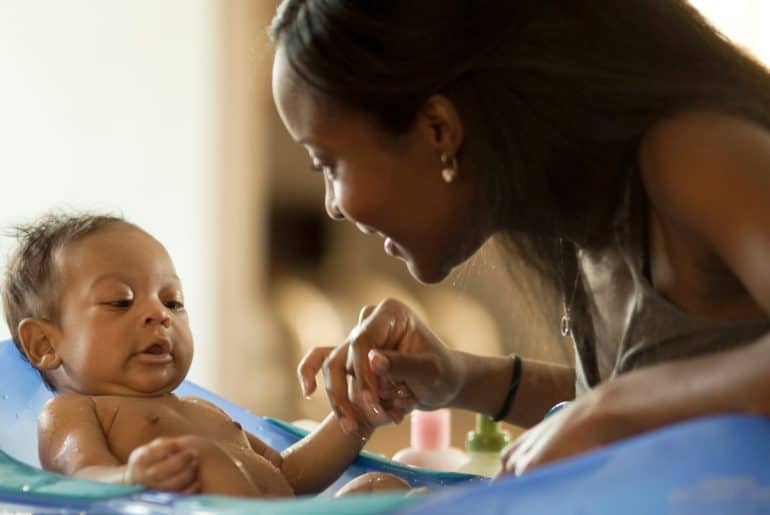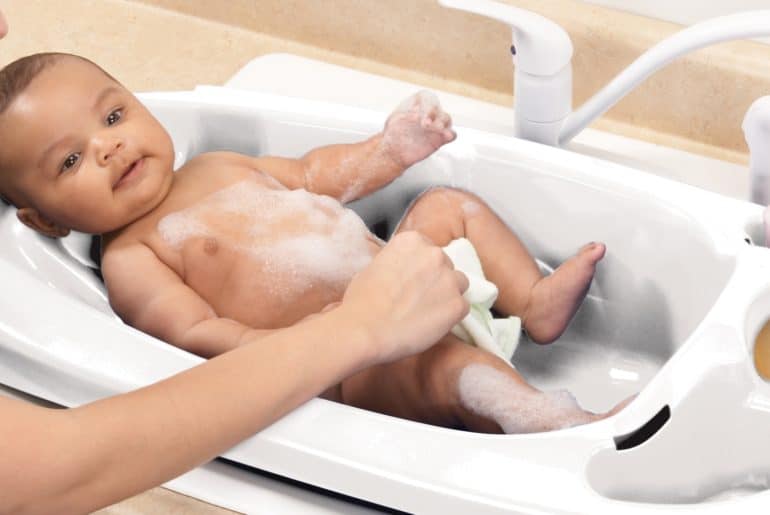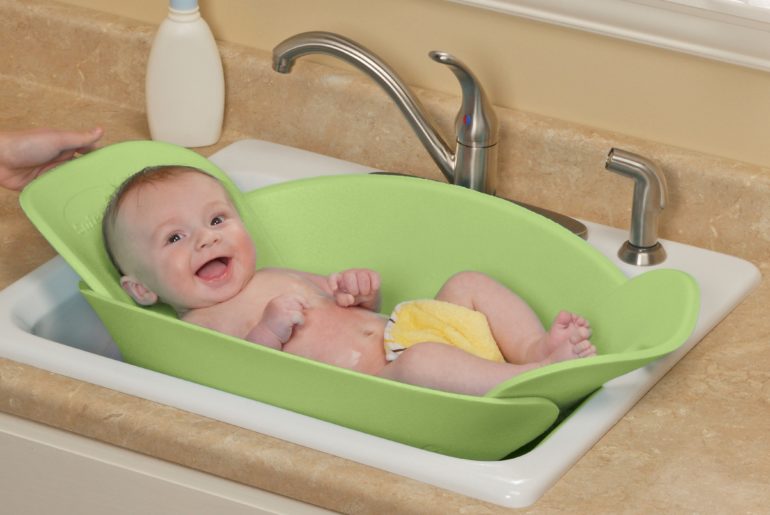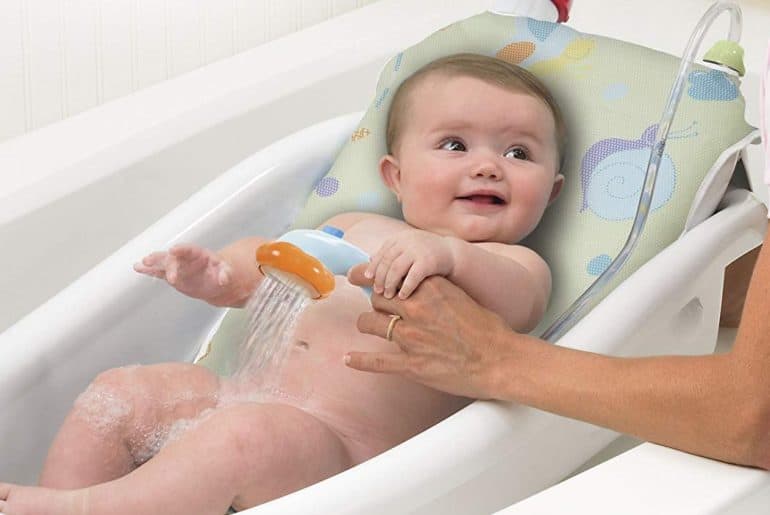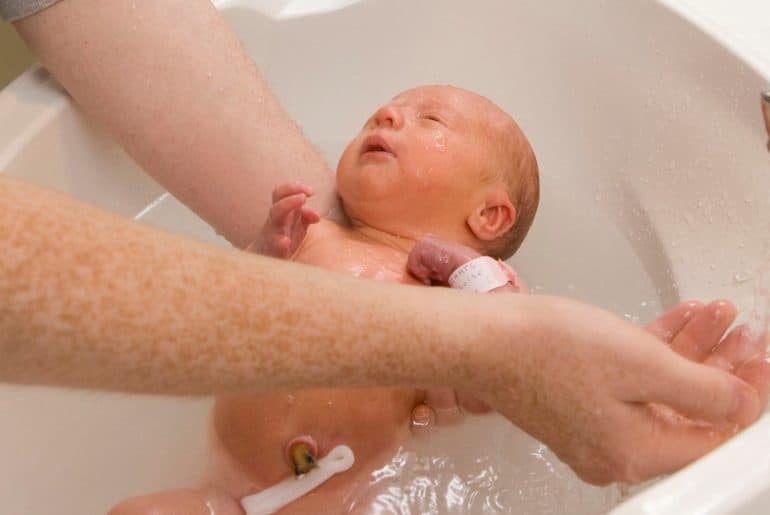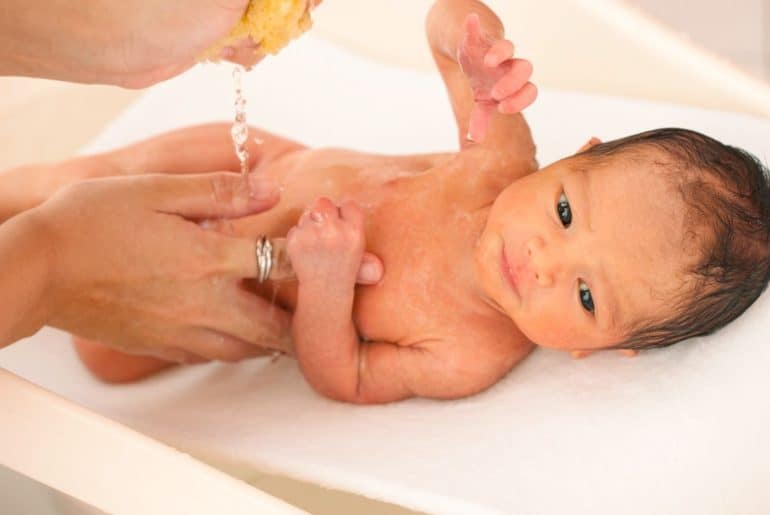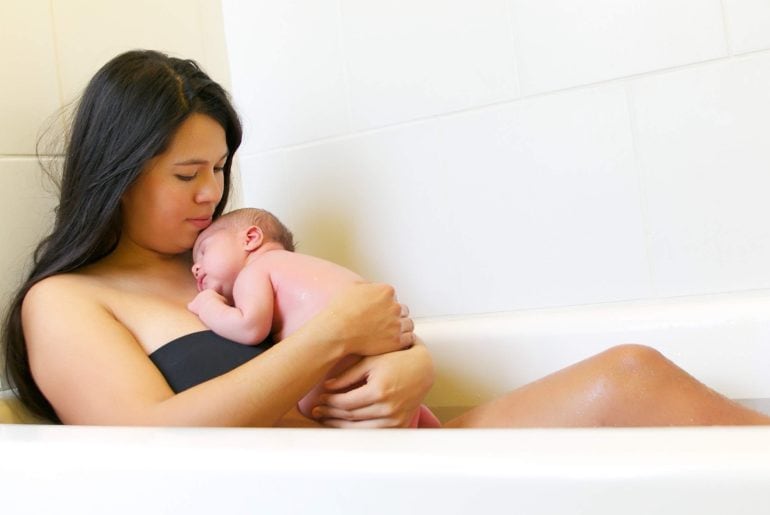Baby’s first bath can be both exciting and scary considering the many dangers that surround this amazing milestone in any parent’s life. But, don’t let it get the best of you. Nearly all of us start parenting without any prior experience, so take bath time on like a champ! As a new parent, you may find yourself overwhelmed by the many techniques and products and unwanted baby advice out there but simply take in what you resonate with and see how it works for you. Bath time can be such a magical experience with baby and you must take necessary precautions to ensure your baby is safe and sound. So, let’s dive in!
Delaying Baby’s 1st Bath?
The first question that comes to mind when thinking of bath time and a newborn baby is ‘when can I give my baby his or her very 1st bath?’ This can be daunting for some new mommies and daddies out there but, have no fear, for I will show you the way!
So, ladies (and gents), most doctors recommend holding off for 48 hours prior to giving baby’s first bath for a variety of reasons. Some of these are reduced risk of infection, stabilized infant blood sugar, higher chances of latching during breastfeeding, etc. This is far from unwanted baby advice because it’s something very important to every parent. Unfortunately, most hospitals take baby, right after birth, and bathe the baby but it is possible to request a delayed bath within your Birth Plan. The pediatric nurses will also be checking for baby health symptoms we see while bathing baby.
Ultimately, the choice is left to mommy but the advantages seem to outweigh the disadvantages in this particular case since that first bath out of the womb is mainly to get off all the vernix and birth fluids.
Related: Baby Health Information: How to Give Sponge Bath With The Umbilical Cord
When is it Safe to Bathe My Newborn?
You may get a lot of unwanted baby advice from elderly folks who believe firmly in the ‘old ways’ but listening to your pediatrician is the best advice you should listen to. Your pediatrician, your doctor, and most likely the nurses in the maternity ward will tell you not to immerse your newborn in water until the umbilical cord has fallen off on its own. Up until that time, only give your precious bundle a sponge bath. Avoid getting the umbilical cord wet is one of the best ways to avoid infection of the area.
Whenever you bathe baby, make sure the room is warm to avoid the baby becoming chilled. Pediatrician Katherine Williams of Children’s Hospital in Orange, California states, “Cold-induced stress can cause the body to work to keep itself warm, which can cause blood sugar levels to drop.”
Baby’s Soft Spot (fontanelles)
After birth, babies have rather fragile spots on their heads, which I’m sure you all have been informed about by now and how it’s best to avoid pressure there. These spots are soft due to a lack of bone that is yet to grow within the gaps of the head. There are two main spots, the anterior spot (located at the top of the head) and the posterior spot (located on the back of the head). The anterior spot is more often noticeable than that of the posterior so be sure to familiarize yourself with your baby’s head. This gives you the opportunity to plan ahead for bathtime and holding the baby and learning what a one month baby can do while bathing.
During bathtime, it is best to use a small washcloth with a shampoo specifically designed for the delicate skin and hair of a newborn. Ensure it is also tear-free (most baby shampoos are)! The highly recognized brands, like Aveeno and Johnson & Johnson, have various products that cater to baby’s bathtime and the majority, if not all, are natural products that nurture the baby’s skin and hair.
Brushing with a soft bristle brush and combing baby’s hair, including his/her soft spot(s), will stimulate hair growth and help avoid cradle cap (build-up of skin flakes on and around the soft spot). Contrary to unwanted baby advice, listening to medical professionals about the soft spots is important.
Washing the baby’s hair and body isn’t necessary on a day to day basis but in moderation throughout the week. However, if the baby does seem to have cradle cap or sweats too much then it is recommended to wash the baby more often. But, this is unique to each mother and baby so be sure to look for the signs on your baby to effectively provide the care he or she needs.
Baby’s Skin and Unwanted Baby Advice
When a baby is first born, his/her skin is covered in a substance called vernix. Vernix is created by the skin cells that the baby originally makes in their early development phases. It contains high levels of protein that assist in the prevention of bacterial infections. Giving the baby a bath too soon can remove this natural protection against infections and leave baby exposed to all types of germs and bacteria. But, as noted, this may have already been done.
When bath time finally arrives, you must ensure you’ve purchased the necessary products to wash the baby properly.
Some of which include:
- Tear Free Baby Bath and Hair Wash
- Sponge or Washcloth (double Rinsed)
- Hooded Towel (baby’s chill easily)
After scrubbing away the vernix (if necessary) and gently washing the baby’s body and hair, mommy may be tempted to put lotion on the baby’s body but most pediatricians will advise against it for the first few weeks. A lot of unwanted baby advice will state that it is important to keep the baby’s skin hydrated, but during the first several weeks, it isn’t usually necessary.
However, there is an exception for babies that develop skin irritations or excessive dryness when you’ve checked for the baby health symptoms we see while bathing baby. If you find yourself in this situation then it is natural to want to come to the baby’s rescue by providing relief with lotion. If this is the case for you then I’d suggest staying away from lotions that are made for adults and include harmful chemical substances like phthalates, parabens, sulfates, artificial fragrances and so on. Always, always, always read your labels! Johnson and Johnson’s Bedtime Baby Bath is hypoallergenic and has a calming fragrance to help baby drift into dreamland.
In addition, Dr. Dipesh Navsaria, a Fellow of the American Academy of Pediatrics states “When bath time is finished, promptly wrap a towel around your baby’s head and body to help her stay warm while she is still wet.”
Aside from skin irritation, you must care for the circumcised area if you opted-in for your baby boy’s circumcision and listened to all the unwanted baby advice regarding ‘to-be or not-to-be.’ Lotion is not recommended for this area considering it will be very tender for a few weeks. It is also sensitive to bacterial infections so mommy, you must keep a close eye on this area of the baby. It is recommended to apply petroleum jelly to the area with every diaper change along with a small coverage of gauze. Constant supervision and thorough cleaning will prevent any infections and promote faster healing.
Related: Baby Health Symptoms of a Blocked Tear Duct
Where can I bathe my baby?
The most common places to bathe baby would be in a sink, bathtub, changing table or flat surface like the kitchen counter. Some very unwanted baby advice is to bathe the baby anywhere there is water. The American Academy of Pediatrics does recommend sponge (or washcloth) baths until the baby’s umbilical cord has fallen off. This usually takes about a week or two. So, consider bathing the baby on a flat surface as opposed to a baby bathtub.
As for what room the baby should be washed in, that changes as the baby grows. Initially, it is best to wash the baby in a warm room with a flat surface that provides support to the baby and mommy (or daddy). Line the space with a towel or changing pad so you can lay baby down and with a free hand, begin to bathe the baby. It is helpful to have a sink or basin full of warm, soapy water nearby. Remember that what a one month baby can do while bathing is pretty much nothing, so be mindful of their twitchy arms and legs.
You may want to consider purchasing a floor mat that can absorb water well in case there are any spills or splashes. If you decide to wash the baby in the bathtub, then I’d purchase a stool for ease during bathtime. Being on your knees or simply kneeling forward can be both tiring and dangerous. Tiring because it takes a toll on your lower back and dangerous because you can slip while bathing baby. So, be sure to make yourself as comfortable as you’re making your baby so you can both enjoy the magnificent experience that is bathtime.
Important: It is important that you NEVER leave your baby unattended during bathtime. If the doorbell rings or someone is calling you on the phone, please, bring baby with you for safety purposes. No phone call or visitor is as important as your baby’s life. They can wait.
Is It Safe to Bathe with my Newborn?
Bathing with the baby is becoming common practice amongst modern-day parents, mostly because it promotes skin to skin contact making the baby comfortable. However, there are some who offer unwanted baby advice, saying that bathing with a child is inappropriate. What’s most important is how you feel.
As fun as it sounds, bathing with the baby does come with a few precautions you should keep in mind. The very first, if not the most important, is to check the water temperature. It should be around normal body temperature and it shouldn’t be any deeper than 3 inches.
Also, be sure to have a helper with you during the time of these one-on-one baths. The helper can pass you the baby when you’re ready for the bath, as well as help once the bath is over. If you don’t happen to have a helper, you can substitute them with an infant or car seat. Simply place the baby in the seat before and after your bath.
Lastly, gather all of the necessary ingredients for your bath. For example shampoo, soap, towels, etc. This will make bathtime go smoothly. Ultimately, the baby responds to your emotions as their parent so if you’re calm and relaxed then the baby will follow in that energy and bathtime will be nothing short of amazing. So, don’t listen to the folks with their unwanted baby advice! You’re enjoying time with your amazing infant!
Keeping baby comfortable makes the process of bathtime and everything in between swift and easy, so ensure you are giving the baby everything he or she needs to keep calm and happy. It is also important to have your ‘me time’ on a daily basis to stay rejuvenated.
Lastly, Dr. Anthony J. Mancini, offers this advice, “Finally, don’t be surprised if your baby cries during his first few baths. He’s just reacting to an unfamiliar sensation. Keep the room temperature warm and the bathwater comfortable. Soothe him by caressing and singing to him. He’ll soon learn to love bath time.
I hope this helps build good bath practices with your baby. Good luck mommies (and daddies)!
Related: All About Baby Swimming: What’s The Ideal Time to Teach Swimming to Babies

